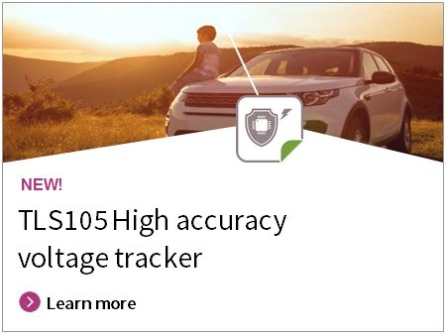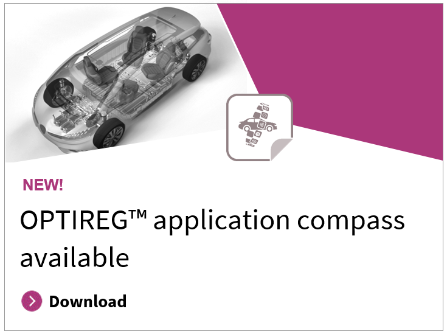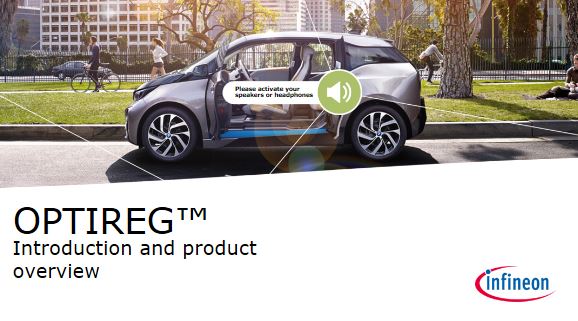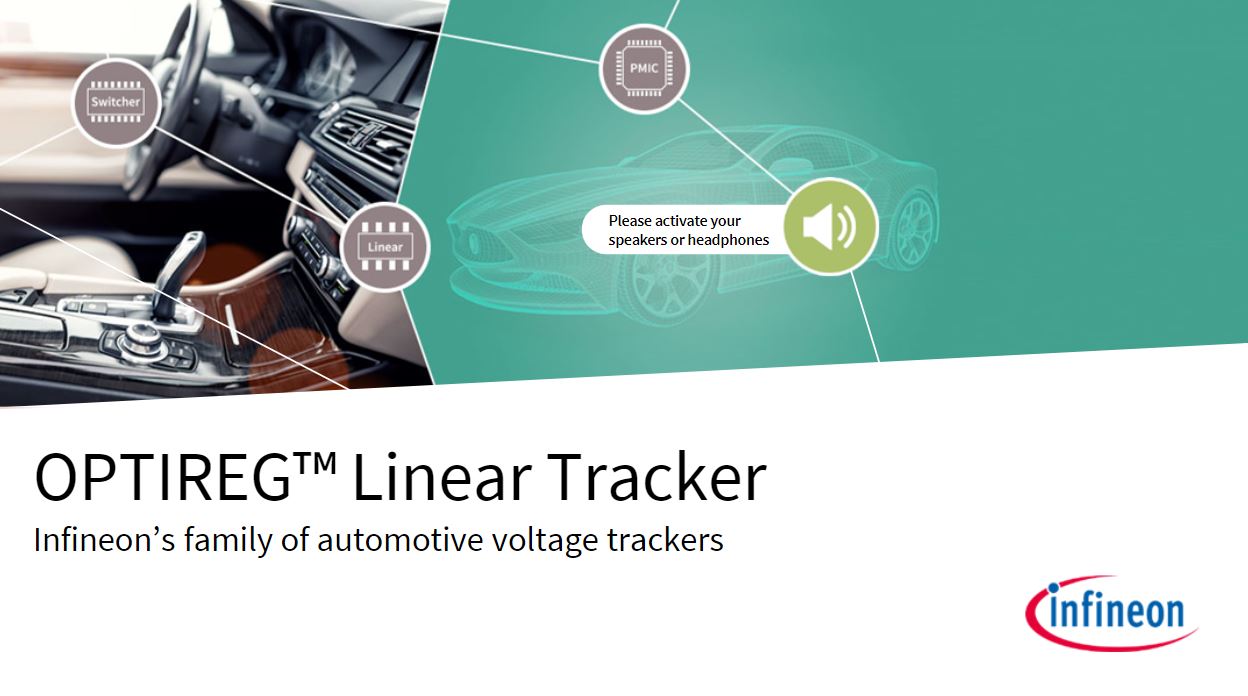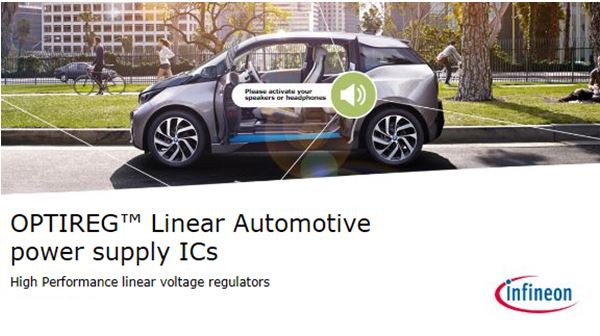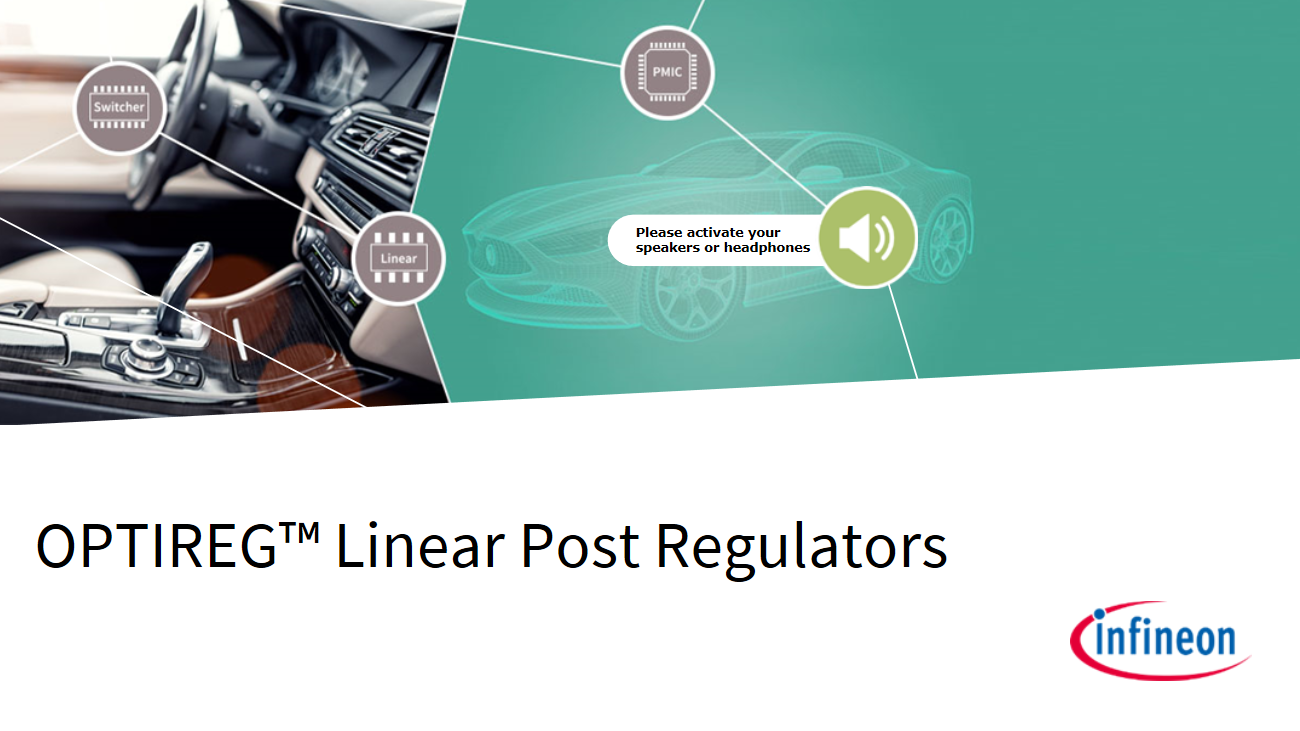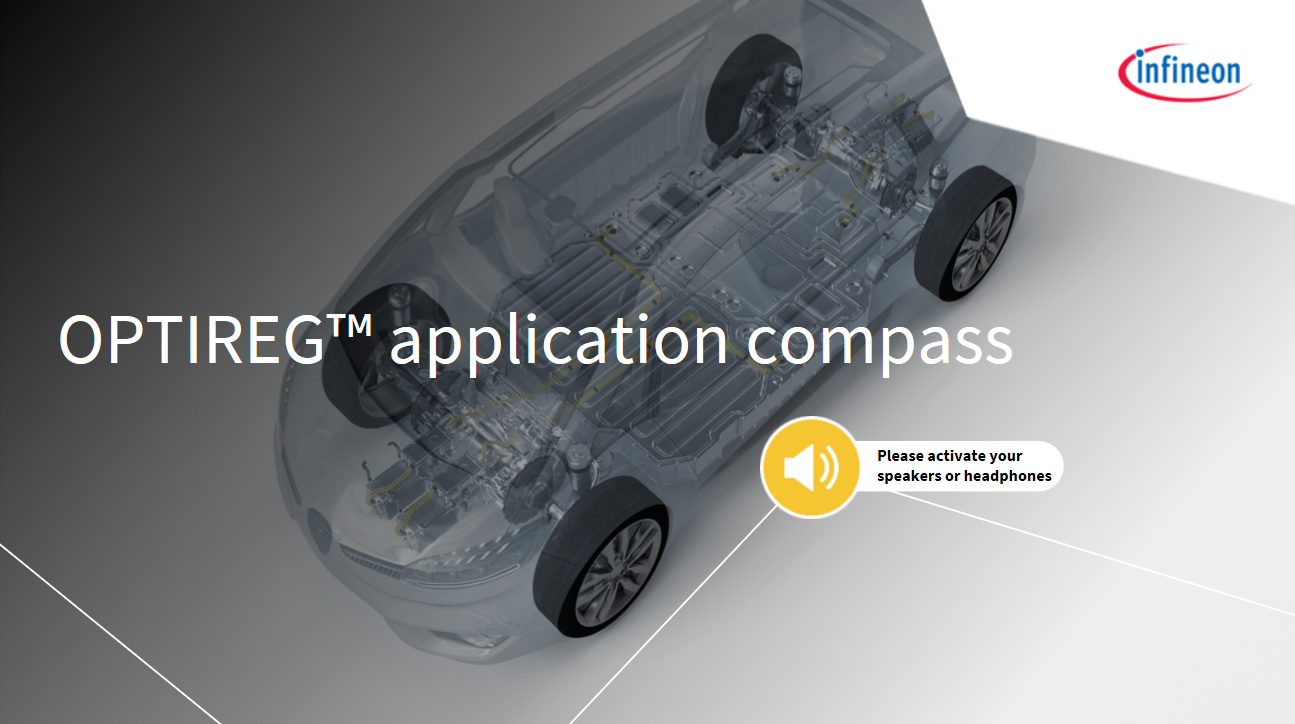线性稳压器(LDO)
简单而多功能的低压差线性稳压器
线性稳压器(LDO) 子类别
折叠所有子类别 展开所有子类别易于使用的LDO 线性稳压器
低压差 (LDO) 线性稳压器易于使用,是简单的电源解决方案。英飞凌为工业和汽车技术提供种类繁多的LDO稳压器。典型的线性稳压器应用包括收发器、微控制器、有源天线和传感器。英飞凌的线性稳压器 (LDO) 具有多种集成功能,例如宽电压范围、电流检测、保护功能以及超低的静态电流。它们噪音低,由小型内部组件组成,便于客户应用。
英飞凌提供一系列低压差线性稳压器IC封装,包括微型无引脚封装, 可用于工业应用和汽车应用,如EPS、变速箱、HVAC、仪表板、车身控制模块、ADAS、远程信息处理和CAV。英飞凌的所有线性稳压器 (LDO) 均采用坚固的设计,可确保产品的整个生命周期内的质量和可靠性。
多种集成式线性稳压器的特点
线性稳压器可将宽范围的直接输入电流转换为较低电压的单个稳定输出电流。输入电压必须高于输出电压,并且电压至少相差2V。例如,可以使用5V低压差稳压器将12V转换为5V。但是,它不能用于将3.3V转换为5V,因为在这种情况下,输出电压会更高。
低压差线性稳压器可以在小于2V的压差范围内工作。它们提供了由很少的组件组成的简易PCB布局。虽然这使得它们更小且易于使用,但它们的效率低于开关电源,未使用的能量会作为调节器的热量消散。为了防止可能的过热,英飞凌的线性稳压器 (LDO) 静态电流很低,温度范围为–40°C-+125°C,并具有集成的过热关断和过热保护功能。它们还提供额外的安全措施,例如过压和短路保护、负载保护和反极性保护。
探索不同类型的线性稳压器
作为 OPTIREG™ 产品系列的一部分,英飞凌提供多种类型的线性稳压器 (LDO),以确保客户设计简单。这包括线性稳压器 (LDO) 的多种产品,高精度电压器跟随器、可变线性稳压器、超低静态电流稳压器 (LDO) 和高性能稳压器。
与开关电源不同,低静态电流稳压器不能与降压或升压转换器一起使用。降压和升压转换器能够分别对电压 “降压” 或 “升压” 电压。 它们不能与线性稳压器配合使用,因为输入电压必须始终大于输出电压。
低压差和可变线性稳压器
低压线性:英飞凌的 OPTIREG™ 产品系列具有种类繁多的低压差 (LDO) 线性稳压器。压差电压表示线性稳压器工作的最低输入电压。与标准线性稳压器不同,低压差线性稳压器可以在小于2V的压差范围内工作。
可变线性:英飞凌提供一系列适用于工业应用的可变线性稳压器(LDO)(也称为可调稳压器)。这种类型的线性稳压器将特定范围内的输入电压转换为负载所需的输出电压。输出电压是可调的,低压差可调稳压器可为系统设计人员的选择提供灵活性。
线性电压跟踪器和高性能线性稳压器
线性电压跟踪器:这些是高精度的稳压器,旨在为比如传感器、麦克风、卫星 ECU 和小型灯具等电子设备供电。 这些类型的线性稳压器没有自己的内部基准电压,因此它们必须准确跟踪外部提供的基准电压。外部电压可从传感器精确采集。
高性能线性稳压器 IC:高性能线性稳压器专为直接连接电池而设计。 它们特点是具有宽输入电压范围,可扩展性能。 这些类型的线性稳压器适用于汽车车载传感器、微控制器、CAN收发器、麦克风和低负载LED等应用。
低静态损耗线性稳压器 (LDO)
静态电流是线性稳压器 (LDO) 的另一个重要特性。当系统处于待机模式时,线性稳压器工作需要消耗静态电流。在这种空闲状态下,几乎不需要给负载供电。但是,LDO将继续消耗静态电流以待命。当系统处于空闲状态时,静态电流通常会以热量的形式消散。
英飞凌提供各种低静态直流电流稳压器 (LDO),包括3.3 V、5 V和超低静态电流LDO。具有低静态电流的稳压器可用于各种应用,因为它们消耗的能量更少,并且可以延长电池供电系统的使用寿命。
For more information on low dropout linear voltage regulators from Infineon, and other electronic components within our range explore our support section.
LDO stands for low dropout and is used to refer to linear voltage regulator ICs, with an optimized dropout voltage. An LDO converts a higher input voltage to a lower output voltage by making use of a regulated pass-transistor. An easy analogy to this method of voltage conversion is to consider an electronically controlled variable resistor. The resistance is automatically adjusted so that at a given output current the voltage drop is exactly the value required to generate the desired output voltage.
Infineon’s LDO families in an overview:
High performance regulators are optimized for direct battery connection. They feature an extended input voltage range for cranking conditions, ultra-low quiescent current during stand-by and excellent line transient performance.
Voltage trackers are designed to supply off-board loads, for example sensors. As trackers do not have their own internal voltage reference, they accurately track an externally provided reference voltage. This external voltage is normally derived from the microcontroller unit (MCU) supply and allows precise data acquisition from the sensor. Trackers feature various protection mechanisms to accommodate for broken cable faults and short-to-battery conditions.
Post Regulators are used in combination with a pre-regulator. They come with excellent PSRR to generate a clean output voltage and are cost and space effective. A combination of post- and pre-regulator increases the overall system efficiency substantially. Optimally suited pre-regulators for Infineon post-regulator devices are Infineon OPTIREG™ Switchers or the Infineon OPTIREG™ PMICs. For more information on Infineon’s switched-mode automotive converters please visit www.Infineon.com/OPTIREG.
OPTIREG™ Linear Application Specific:
Application specific LDOs are a collection of highly specialized LDOs. Examples include active antenna supplies and LDOs for usage in 24 V systems.
General purpose LDOs refer to Infineon’s well-established and versatile LDOs. They are suitable for a broad range of general-purpose applications.
LDOs for a broad range of industrial applications.
An LDO is a simple, yet robust and cost effective means to generate a stable output voltage whilst supplying constant load currents of up to 500 mA depending on the application and the LDO used. An architecture containing an LDO requires minimal external components, keeping the overall system complexity and BOM cost low.
To operate an LDO, only a minimal amount of external components are required. Essential for all LDOs are an input capacitor for decoupling and an output capacitor for buffering line transients and obtaining LDO stability. Depending on the LDO topology, a diode may be required to protect the LDO during reverse polarity conditions.
The efficiency of an LDO is defined as the ratio between output power (POUT) and input power (PIN). To calculate the input power accurately, the quiescent current (Iq) also has to be taken into account.
The quiescent current is the current required to power the internal circuitry of the LDO.
The power loss, or dissipated power, is defined by the difference between input power and output power.
To learn more about LDOs please refer to the Infineon “What The Designer Should Know” - Guide




